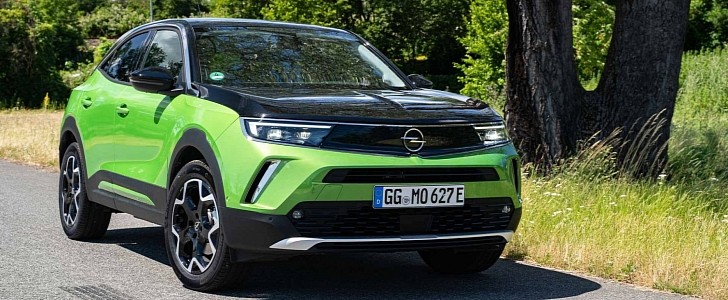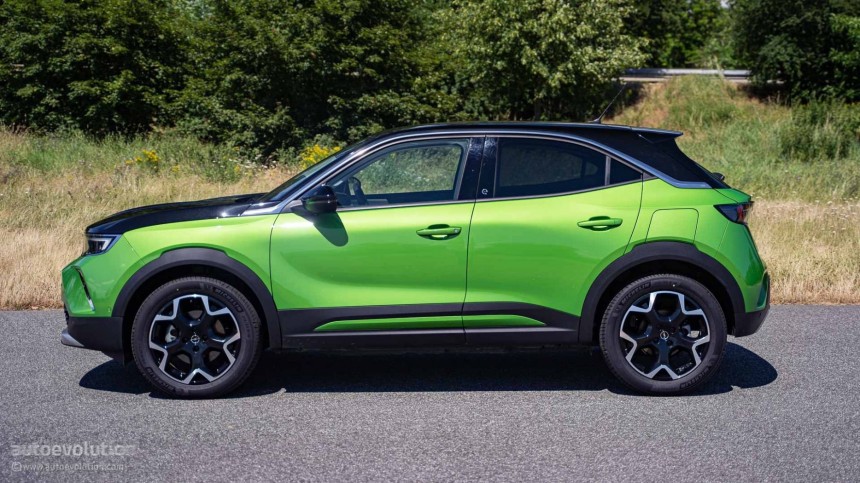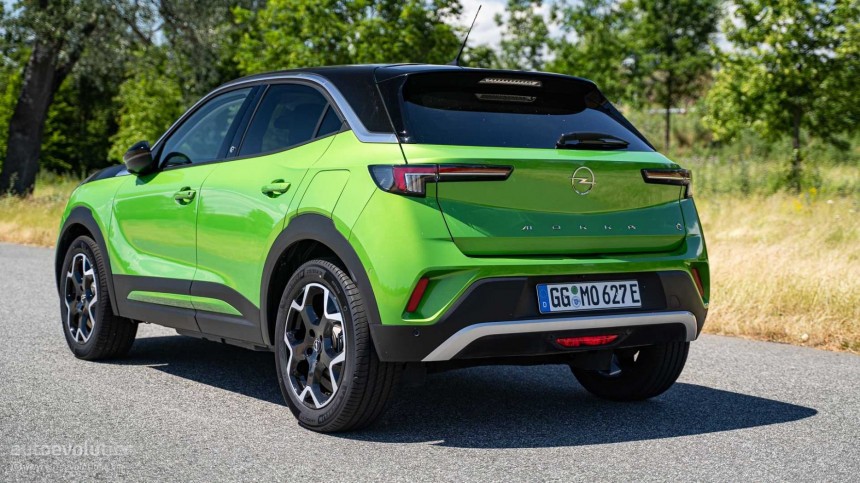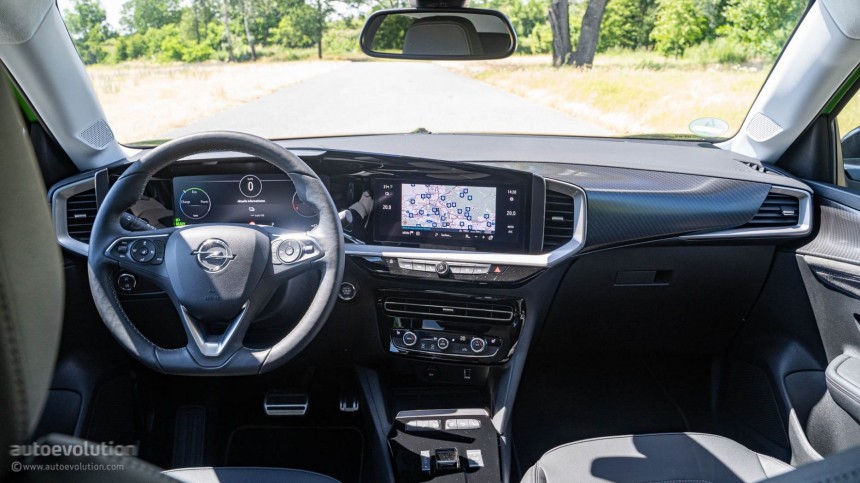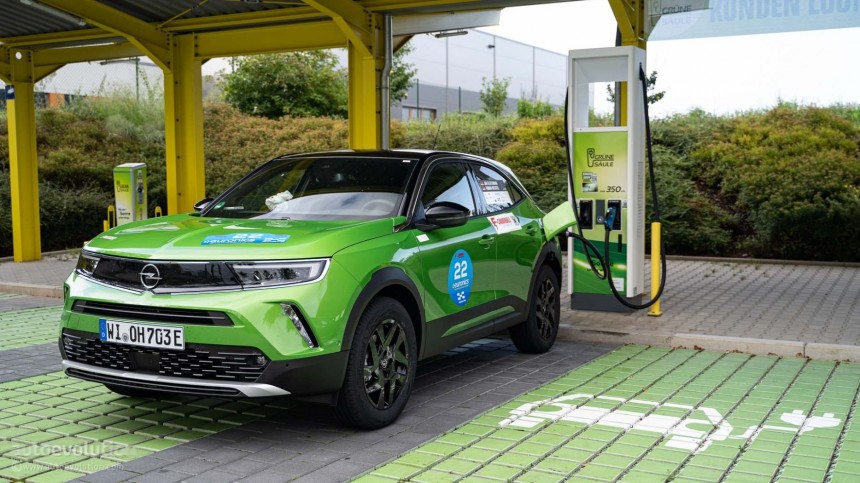With the new Opel Mokka-e, the Stellantis owned and Germany-based brand not only wants to bring its new design language to a wider audience, but also wants to gain a foothold in the faster growing EV market. Therefore the city SUV in the variant with electric drive is intended to generate unit sales. We want to find out in our test drive whether that works in everyday life.
The first generation of Opel Mokka was a huge success. Even if its design seemed rather uninspired to some, many buyers opted for the small city SUV. The successor does a lot of things radically different, and above all it sets its own standards even higher: The Mokka, unveiled in June 2020, wants to achieve significant electric unit sales. To check these ambitions, we asked the EV variant to take part in our test.
With the new Mokka, Opel intelligently transports the spirit of the brand into a new generation. Because the Mokka is perceived as an Opel at first glance – which in this case is to be understood as a great compliment. The focused look of the glorious Manta A, the black hood of the Kadett B Rallye Coupé and a powerful coke-bottle body like the GT (yes, the one with the spectacular pop-up headlights). If you now add the 19-inch alloy wheels to the surcharge list, you also underline the powerful side line with the tight overhangs and a low-slung crossover roof. As you can see, we like the new Mokka from a purely visual point of view.
The problems become even more obvious on the backseats, The entrance is even narrower and the footwell is really tight. Four adults can only find room in mutual compromise. Even with a rear-mounted child seat, the little ones immediately cling to the front seat.
Its maximum output is 136 hp and it provides a maximum torque of 260 Nm. The electric motor only powers the front wheels and is placed in the classic engine compartment at the front with all the auxiliary units. When it comes to charging, everything currently available on the market is possible, from a household socket (16 hours) to 100 kW (30 minutes to 80 percent). Three-phase charging at the wall-box at home with 11 kilowatts is recommended. This allows an empty Opel Mokka-e to be refilled in a good five hours.
This is matched by the good recuperation performance at gearbox level B, which makes the brake pedal almost obsolete and gives the good feeling of shovelling the kinetic energy back into the battery at any time. In the city, the EV SUV also impresses with low fuel consumption. Despite extensive use of the air-condition at high outside temperatures, which by the way cools the car remarkably well, we easily achieved average consumption of around 15 kWh/100 km, which is well below the factory specification.
Unfortunately, the situation is different when driving more dynamically. And that applies to both consumption and driving behaviour. Naturally, the consumption of electric vehicles increases on the motorway, but the Opel Mokka-e, like its platform colleagues, is not one of the picky eaters. 25 kWh/100km and more are not uncommon when driving along the recommended speed of 130 km/h on the German Autobahn. The real range in summer is therefore just about 200 kilometres on the motorway, while in the city 300 km is usually within reach.
While its combustion engine colleagues weigh in at 300 kilograms less and wobble around the bends with corresponding ease, the electric Mokka always feels a little stressed. And we're not even referring to the operating forces, because the steering in particular feels quite well in the various driving modes. If you listen to the car, however, you will quickly notice that the Mokka-e is not really suited to fast countryside rides.
For this reason, we give the Opel Mokka-e a 3.5/5 stars.
Since the Opel Mokka-e doesn't drive particularly far electrically, nor does it charge particularly quickly, we had to make sure we were the first at the charging station. With an average speed of 120 km/h, the consumption display quickly showed 19kWh/100km. This provided a relaxed range of 200 kilometers on the Autobahn. At the second charging stop, however, it was clear: one competitor was uncatchably ahead. We would never have been able to beat him on the given route.
We therefore changed our plan and wanted to reach the finish line by the most direct route. Well aware of the penalty points, the regulations could play into our cards: we would drive less distance and need less time. So it was a math problem. The Opel Mokka-e then drove the last stint with everything it could.
A constant 150 kph (93 mph) was no problem. However, for extra efficiency we now switched off the air conditioning. At the finish line, of course, we were the first. A nice feeling and a worthy race victory in the spirit of the Cannonball idea. At least for the audience. In the final ranking, however, we were heavily penalized with the penalty points. The tour was supposed to be fun - and with the given rules it definitely wouldn't have been. Electromobility may be good for many things, but not for a pointless rally across Germany.
Technical data:
Model: Opel Mokka-e
Engine: Permanently excited synchronous motor
Power: 100 kW/136 PS
Torque: 260 Nm
Drive: Front-wheel-drive, input reduction gearbox
Fuel consumption combined (WLTP): 18.0-17.4 kWh/100km²
Test consumption: 19.1 kWh/100km
CO2 emissions combined: 0 g/km²
Range (WLTP): 324-313 km (201-194 miles)
Test range: 275 km
Acceleration (0-100 km/h / 62 mph): 9.0 seconds*.
Top speed: 150 km/h (93 mph)
Dimensions (L/W/H): 4.15 m/1.79 m/1.53 m
Weight: 1,598 kg*
Base price: from 34,110 Euro in Germany
*Manufacturer's specifications
Design: The Opel Mokka-e represents a completely new generation of Opel
The effect of design is always something very subjective. But with the Opel Mokka-e, the designers at the company headquarters in Rüsselsheim (Germany) have succeeded in creating a truly good look. For its segment this really very compact SUV quotes the GT X Experimental study from 2018 in many places and even adopts some elements one-to-one. Even the references to the past, which elsewhere quickly fall into the boring retro trap, seem uninhibited.Interior: the compact body shape takes its toll
The design fireworks of the bodywork come at a price, however. The waisted side line costs valuable space in the interior. Even if the Opel Mokka-e looks quite grown-up on the outside, it remains a small car on the inside. The sill is wide and high, making it difficult not only for older people to get into the car. It is also difficult to find a proper seating position, although the seats are, in typical Opel manner, comfortable and suitable for long journeys.The problems become even more obvious on the backseats, The entrance is even narrower and the footwell is really tight. Four adults can only find room in mutual compromise. Even with a rear-mounted child seat, the little ones immediately cling to the front seat.
Technology: the PSA-E construction kit is by now more than well known
The Mokka stands 1:1 on the same basis as the Corsa(-e) and thus also the Peugeot 208, 2008 and various Citroën and DS. The electric CMP, short for Common Modular Platform, not only combines very different bodies, but also very different drivetrains under the same hat. In the case of the electric variant, i.e. also that of the Opel Mokka-e, it offers a permanently excited electric motor in addition to a 50 kWh battery that requires 220 litres of volume and is installed in the vehicle floor.Driving dynamics: How does the Opel Mokka-e drive?
However, the electrochemical powerhouse is drained much faster than charged. Thanks to the electric motor's 260 newton-metres of torque, you can always get off to a good start at the traffic lights. So the matcha-green Opel Mokka-e's main discipline is certainly its swift ride through the city. The 136 hp drive is lively and allows the small SUV to push into any gap with pinpoint accuracy.This is matched by the good recuperation performance at gearbox level B, which makes the brake pedal almost obsolete and gives the good feeling of shovelling the kinetic energy back into the battery at any time. In the city, the EV SUV also impresses with low fuel consumption. Despite extensive use of the air-condition at high outside temperatures, which by the way cools the car remarkably well, we easily achieved average consumption of around 15 kWh/100 km, which is well below the factory specification.
Driving comfort: A comfortable city cruiser, not a lap-time chaser
The Opel Mokka-e is therefore more at home in the city than on the open road. If you throw it too hard around the bend, you will be surprised by relatively strong body roll due to a chassis that seems slightly underdamped. This is where the high kerb weight of almost 1.6 tonnes shines through.While its combustion engine colleagues weigh in at 300 kilograms less and wobble around the bends with corresponding ease, the electric Mokka always feels a little stressed. And we're not even referring to the operating forces, because the steering in particular feels quite well in the various driving modes. If you listen to the car, however, you will quickly notice that the Mokka-e is not really suited to fast countryside rides.
Conclusion
The Opel Mokka-e is a lifestyle cruiser for everyday use without ambitions for greater things. If you're looking for a cool car that can occasionally transport friends and family on short journeys, but is otherwise mainly used on its own, this is the car for you. It handles the daily commuting tasks playfully and very efficiently, so there would actually be no further reason for criticism. If it weren't for the price in the end. The Opel Mokka-e starts in Germany at 34,110 Euro on the price list, the tested Ultimate Edition is 41.220 Euro in the price list but also fully equipped. Nevertheless these are proud prices for a small car that quickly puts an end to the joy of electric mobility.For this reason, we give the Opel Mokka-e a 3.5/5 stars.
Addendum: How much fun can you have to take part in an EV rally with the Mokka-e?
To test the performance (or maybe the fun) to the extreme, we entered the Opel Mokka-e in the so-called Cannonball Rally. Well, it's not the Cannonball Rally, but the e-Cannonball in Germany. On a route from Berlin to Munich over 600 kilometers (approx 1,000 miles), the electric participants are supposed to show what they can do. However, the rules have also been adapted: Not the first (and thus fastest) to the finish line wins, but a complex matrix of time driven, distance driven, fuel consumption, charging stops and bonus points from special stages decide on victory or defeat. Nevertheless, our strategy was quite simple: Full throttle. Or just: Full e-power.We therefore changed our plan and wanted to reach the finish line by the most direct route. Well aware of the penalty points, the regulations could play into our cards: we would drive less distance and need less time. So it was a math problem. The Opel Mokka-e then drove the last stint with everything it could.
A constant 150 kph (93 mph) was no problem. However, for extra efficiency we now switched off the air conditioning. At the finish line, of course, we were the first. A nice feeling and a worthy race victory in the spirit of the Cannonball idea. At least for the audience. In the final ranking, however, we were heavily penalized with the penalty points. The tour was supposed to be fun - and with the given rules it definitely wouldn't have been. Electromobility may be good for many things, but not for a pointless rally across Germany.
Overview
Pros:
Modern and exciting styling
Individual customization options in colours, wheels and fabrics
Decent everyday charging performance
Cons"
Moderate interior space, especially in the rear
Seating position rather uncomfortable for drivers over 1.80 metres
E-drive inefficient at higher speeds
Technical data:
Model: Opel Mokka-e
Engine: Permanently excited synchronous motor
Power: 100 kW/136 PS
Torque: 260 Nm
Drive: Front-wheel-drive, input reduction gearbox
Fuel consumption combined (WLTP): 18.0-17.4 kWh/100km²
Test consumption: 19.1 kWh/100km
CO2 emissions combined: 0 g/km²
Range (WLTP): 324-313 km (201-194 miles)
Test range: 275 km
Acceleration (0-100 km/h / 62 mph): 9.0 seconds*.
Top speed: 150 km/h (93 mph)
Dimensions (L/W/H): 4.15 m/1.79 m/1.53 m
Weight: 1,598 kg*
Base price: from 34,110 Euro in Germany
*Manufacturer's specifications
